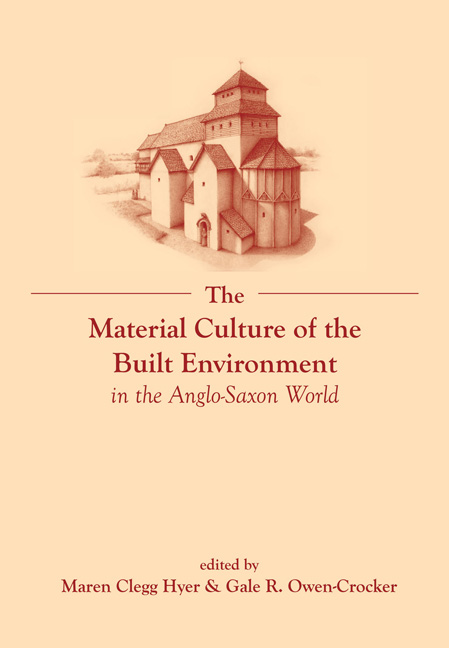Book contents
- Frontmatter
- Dedication
- Contents
- List of Figures
- List of Tables
- List of Contributors
- Introduction
- 1 Enta geweorc: The Ruin and its Contexts Reconsidered
- 2 Roads and Tracks in Anglo-Saxon England
- 3 Domestic Dwellings, Workshops and Working Buildings
- 4 Place and Power: Meetings between Kings in Early Anglo-Saxon England
- 5 The Cuckoo and the Magpie: The Building Culture of the Anglo-Saxon Church
- 6 Landmarks of Faith: Crosses and other Free-standing Stones
- 7 Landmarks of the Dead: Exploring Anglo-Saxon Mortuary Geographies
- 8 Boundaries and Walls
- 9 The Landscape of Late Saxon Burhs and the Politics of Urban Foundation
- 10 Signalling Intent: Beacons, Lookouts and Military Communications
- Notes
- Suggested Reading
- Index
7 - Landmarks of the Dead: Exploring Anglo-Saxon Mortuary Geographies
- Frontmatter
- Dedication
- Contents
- List of Figures
- List of Tables
- List of Contributors
- Introduction
- 1 Enta geweorc: The Ruin and its Contexts Reconsidered
- 2 Roads and Tracks in Anglo-Saxon England
- 3 Domestic Dwellings, Workshops and Working Buildings
- 4 Place and Power: Meetings between Kings in Early Anglo-Saxon England
- 5 The Cuckoo and the Magpie: The Building Culture of the Anglo-Saxon Church
- 6 Landmarks of Faith: Crosses and other Free-standing Stones
- 7 Landmarks of the Dead: Exploring Anglo-Saxon Mortuary Geographies
- 8 Boundaries and Walls
- 9 The Landscape of Late Saxon Burhs and the Politics of Urban Foundation
- 10 Signalling Intent: Beacons, Lookouts and Military Communications
- Notes
- Suggested Reading
- Index
Summary
Him da gegiredan Geata leode
ad on eordan unwaclicne,
helmum behongen, hildebordum,
beorhtum byrnum, swa he bena was;
alegdon da tomiddes marne teoden
haled hiofende, hlaford leofne.
Ongunnon ta on beorge balfyra mast
wigend weccan; wud[u]rec astah,
sweart ofer swiodole, swogende leg
wope bewunden (windblond gelag),
odtat he da banhus gebrocen hafde,
hat on hredre.
The Geat race then reared up for him / a funeral pyre. It was not a petty mound, but shining mail coats and shields of war / and helmets hung upon it, as he had desired. / Then the heroes, lamenting, laid out in the middle / their great chief, their cherished lord. / On top of the mound the men then kindled / the biggest of funeral-fires. Black wood-smoke / arose from the blaze, and the roaring of flames / mingled with weeping. The winds lay still / as the heart at the fire's heart consumed / the house of bone.
Introduction
Landscape perspectives have transformed our understanding of the early medieval world, but their emphasis is often upon the world of the living: settlements, farms, field systems, roads and estates. In many accounts, burial places are absent or play only a supplementary role in shedding light on inhabited space. Conversely, early medieval graves, well-recognised since the eighteenth century, have tended to be intensively studied through the artefacts and bodies they contain rather than in terms of their spatial dynamics.
This gap has been filled in different ways over the last fifty years. Some studies have explored the shifting landscape locations of ‘pagan’ and ‘conversion period’ cemeteries. The origins of minster churches and their burial grounds, and the subsequent development of the parochial system, have also been linked to the origins of ‘Christian’ burial in different guises, although it is now recognised that ‘field cemeteries’ were the norm for the rural population until the Viking Age. These publications and others have made major contributions to understanding early medieval mortuary geography, yet just as many landscape studies have ignored burials; recent papers, even when taking a ‘landscape’ perspective, have tended to regard burial sites as undifferentiated dots on a distribution map and as little more than bi-functional places of corpse-disposal and commemorative landmarks.
- Type
- Chapter
- Information
- Publisher: Liverpool University PressPrint publication year: 2015

